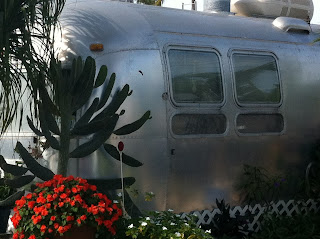We drove around and saw many of the sights that would have been fun to visit. The parking was just about non existent, so we toured the island and left. I will buy books and dvd's for a "virtual" visit. Some of the attractions that would have been interesting are the Hemingway home, where he did much of his writing and kept numerous 6 toed cats. There are now abut 50 descendants of those cats.
 |
| Hemingway's Key West House |
 |
| A favorite Hemingway Bar-a pic from the Internet with no crowds |
One of the wonderful things about traveling as we do is the availability of the Internet, especially since we purchased our own hot spot and don't need to rely on campground wifi. When we run across something interesting, want to check weather etc., onto the computer we go. I looked up 6 toed cats, also called Hemingway cats or more correctly, polydactyl cats, I ran across this article. Where will government intrusion end????
http://townhall.com/columnists/jonahgoldberg/2012/12/28/dont-tread-on-sixtoed-cats-n1474945/page/full/
Another attraction that was new to me was the Mel Fisher Maritime Museum. Himself was familiar with the stories but it was all new to me. I have since found books and dvd's about this on Amazon and will see what I missed on the visit. The following is a brief summary from the museum website about the Fisher story.
Mel Fisher, a dreamer, a visionary, a legend and most importantly, the World's Greatest Treasure Hunter! Mel Fisher did what many have not - he realized his dream during his lifetime. Everyday he insisted, "Today's the Day"! His mantra continues to inspire the search for the rest of the treasure from the Nuestra Senora de Atocha and the Santa Margarita, the Spanish galleons that sank during a hurricane on September 6, 1622, near Key West, Florida.
Mel Fisher suffered many personal losses to keep his dream alive during his 16 year search and endured over 100 court battles which ended in victory in the US Supreme Court. The riches Mel Fisher, his team and investors had worked so hard for all those years were finally theirs. The $450 million dollar treasure cache or "Atocha Mother Lode" would be found on that momentous day, July 20, 1985. Over 40 tons of silver and gold were located including over 100,000 Spanish silver coins known as "Pieces of Eight", gold coins, Columbian emeralds, silver and gold artifacts and over 1000 silver bars.
Another attraction is the symbol demonstrating that Key West is the furthest point south in the continental US. Again, the line was about 50 persons long for a personal picture so here it is without Raggie and me. Note that Key West is closer to Cuba than to Miami!
One of the things we noticed in the Keys, particularly Key West, was the colorful roosters. I decided to google Key West Roosters and here you are. It seems that our island, Vashon, has no corner of local controversy.
http://usatoday30.usatoday.com/news/nation/2003-01-16-roosters-usat_x.htm
Another appeal to Key West is the "Caribbean" architecture. There are many old homes that are just fabulous. It we come back at a time when the crowds are tolerable, I would love to take a walking tour.
Another item on my culinary bucket list was conch. We left the island and found a neat local cafe so I could try conch.
 |
| Conch |
 |
| Fried Conch Strips |
Once back to our area, we tried a locally recommend restaurant, both on the water and dog friendly. We all had a nice time with fish tacos and a fish sandwich.
We left the keys yesterday and found a City RV park in Homestead. Homestead is a major winter produce growing area, in addition to having many tropical plant nurseries. We found several farm stands and loaded up on corn, tomatoes, onions, lettuce, avocados, papaya and strawberries. Like summer in Vashon, tomatoes and strawberries that have not been picked early, refrigerated and shipped are such a treat.




























